Bodoland – A Journey through Untouched Assam
Bodoland is yet to experience footprints of massive tourists but the experiential journey through the landlocked terrain gave a strong insight into efforts by Bodoland Tourism. The community driven conservation, eco-tourism initiatives and expansive trail of nature snaking through UNESCO Heritage Site declared Manas National Park whisked me into captivation. The romantic mustard fields flanking the country side roads and the handsome hills on the far end is a site regular through a road trip to Bodoland.

It was an honor for me to be chosen as “Ambassadors of Bodoland” – a chance to bring out stories, learn about Bodo culture, travel to untouched pristine places, understand true meaning of reformation and help in putting Bodoland on the tourism map. The chronicles of political instability and unrest in Bodoland has died down, charting a new story and vision that aims at development, better livelihood and conservation of natural resources through wildlife and forest protection.
PIN THE POST TO READ LATER
Table of Contents
Where is Bodoland?
Bodoland is an autonomous region, in state of Assam, formed after amalgamation of four neighboring districts, collectively known as Bodoland Territorial Area Districts (BTAD). The four districts – Kokrajhar, Chirang, Baksa and Udalguri, together forms Bodoland. Tucked between the foothills of Bhutan and Arunachal Pradesh, the pristine and untouched terrains present a handsome picture, still raw and rugged. It is million constellations away from the monochromatic definition of tourist destination, presenting nature in its virgin self. Bodoland is inhabitated majorly by the Bodo Tribe, most of them with keen prowess towards nature conservation.

BTAD Formation – End to a decade old Turmoil
The formation of BTAD granted autonomous status in February 2003 after Bodo accord was signed between Bodo militants and central government. Bodoland, after years of extreme solicitation, political unrest and aggravated insurgency, has been given the power to be autonomously run by BTC (Bodoland Territorial Council. The separatists demand and fight for statehood led to a lot of violence. The demands of statehood were born out of fear of losing their cultural and tribal identity, born immediately after the Assam Movement.
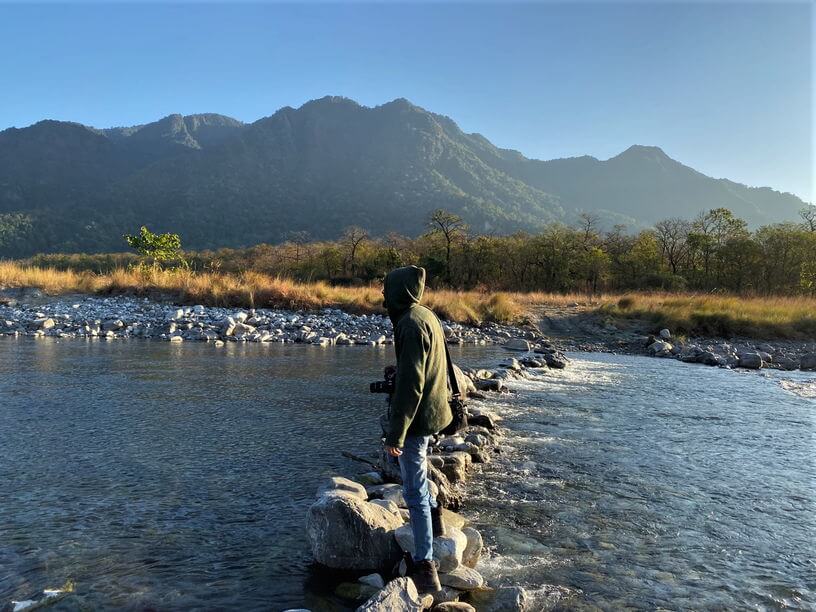
The main goal of fighting for autonomous status and statehood was to protect the Bodo socio-culture and ethnicity, develop infrastructure, increase employment opportunities, boost economic growth, protect land rights etc. The decade old dispute saw its ultimate closure with establishment of BTAD which includes four districts – Kokrajhar, Baksa, Chirang and Udalguri, controlled by autonomous council of BTC. The council is headed by Hagrama Mahilary, Chief Executive Member. We, as Ambassadors of Bodoland, got the chance to meet Kampa Borgoyari, Deputy Chief of BTC. In short, in very layman terms, Bodoland can be considered as state within a state.

Shri Chandan Brahma – Honorable Tourism Minister of Assam
An evening discussion with Shri Kampa Borgoyari – Deputy Chief of BTC
Is it safe to Travel to Bodoland?
The question of safety in Bodoland as tourist loosely hangs in mind of a lot of people. Undoubtedly, going by the past records, it indeed is a questionable place to travel to. It can be a little intimidating for people to venture into this part of Assam alone but with initiatives by Bodoland Tourism, travelling across the untouched terrains of Bodoland is absolutely safe. In short, it is time to let go off the presumptions based on the disputes and insurgency in the past. Through my personal experience, I found people in remote villages and across Bodoland very welcoming, amicable and prowess in outstanding hospitality.
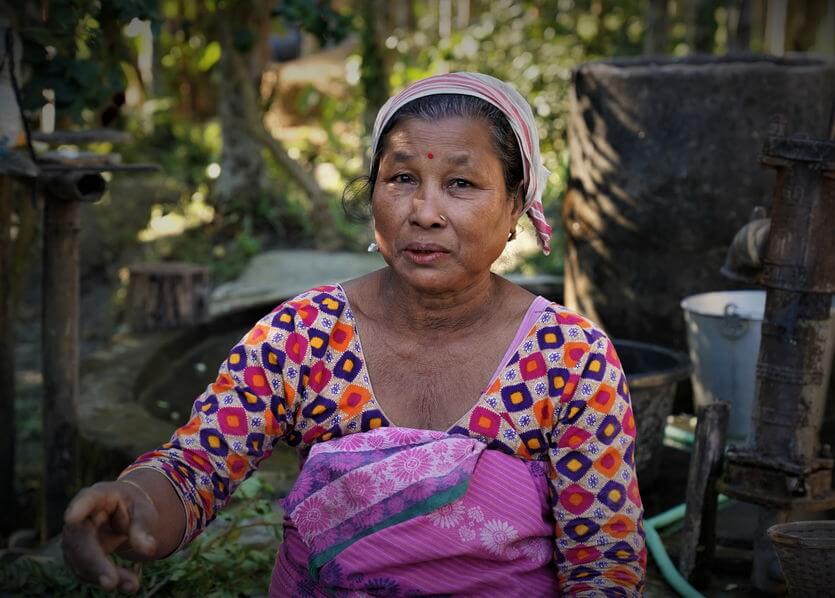
Glimpses of Bodo culture – Bodoland tourism
Bathou – Worshipping 5 Elements of Nature
Bathou is the aboriginal religion followed by Bodo tribe across many cluster of villages in Bodoland. Since time immemorial, Bathouism is followed by Bodo tribe but now people have started accepting and embracing other religion. The faith, belief, traditions and customs of Bathouism has been passed down the generations. Bathou religion is based on worship of five deep principles or elements– Earth (Ha), Water (Dwi), Air (Bar), Fire/Sun(San) and Sky(Okhrang), essential for survival.

Sijou Shrub used for Bathao Worship 
The Shrub guarded by bamboo fence
The Sijou Shrub resembles a large sized cactus and is worshipped, considering it to be chief diety of Bathouism called Bathoubwrai. The woody shrub is planted in the courtyard surrounded on all sides with circular or square bamboo fence, in the northeast corner. During a visit to a Bodo Village, our guide briefed us about the religion, shrub and showed how each stem has five protruding stem sticks represent 5 elements worshipped. The place where the Sijou Shrub is planted and worshipped is called Sijousali.
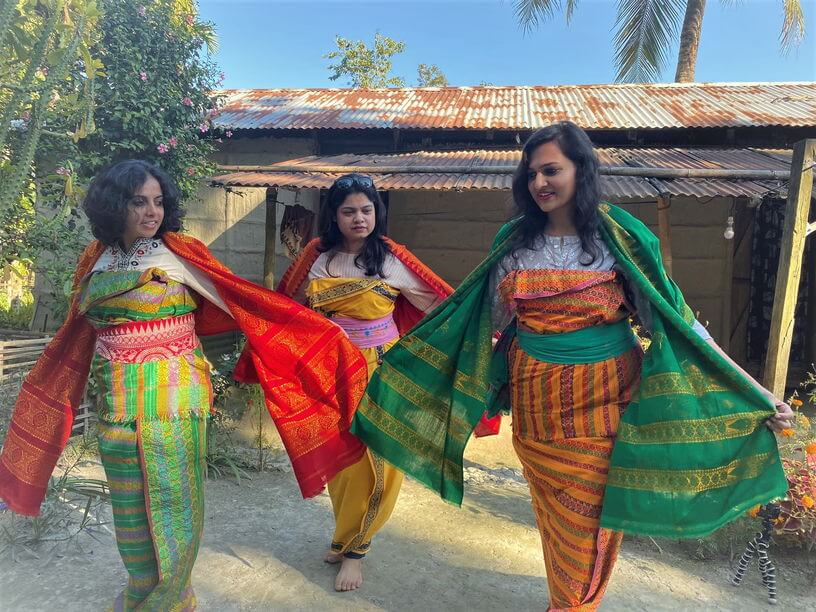
Bodo Homes in Villages
During our visit to the Nangdorbari Village in Chirang District, the whole team of Bodoland Ambassadors was hosted by one of the Bodo homes. The guide gave us information about how their homes are built. With a open courtyard in between, all sides are covered by countryside homes in rectangular fashion. The open area is generally a good space for gathering and children to play. One of the homes is only for unmarried daughters, another for elders like parents, one of them is for boys and guest called Saura and one home is a dedicated kitchen called Ywngkam Songra in Bodo.
Food and Local Delicacies of Bodo Tribe
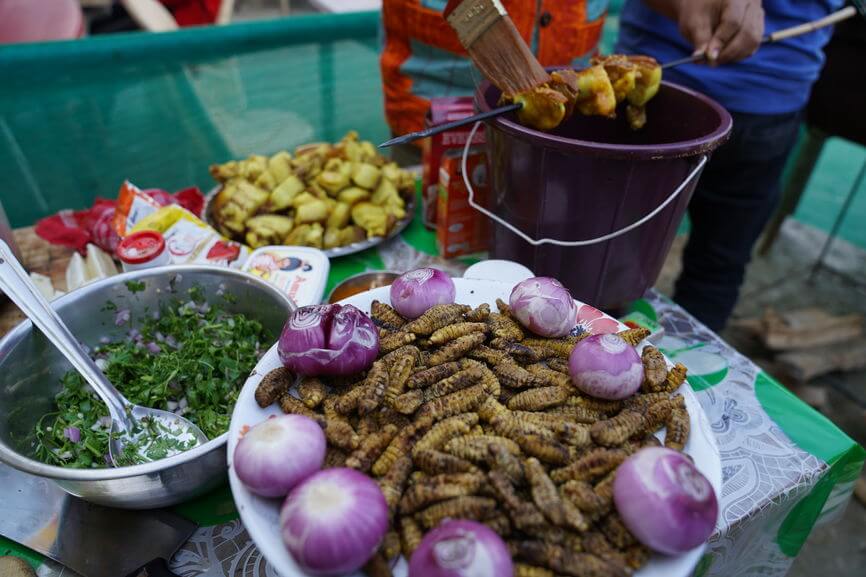
The ethnic tribal cuisine is a platter of eccentricity that will give a zing to your taste bud. Silkworm is a local delicacy and most of the families are involved in rearing silkworm for food. Another important delicacy is meat cooked in rice powder paste. The local Bodo family treated us with a sumptuous ethnic lunch that has silkworm fry, snail curry, pork, chicken slow cooked in rice paste, sticky rice and a lot of leafy vegetables. The steamed rice cake is a staple with tea in most of the Bodo village. Not only for non-vegetarian, but there are a lot of vegetarian as well as vegan food options in Bodo villages.

Ladies with their fishing gears 
Men use fishing nets for fishing
Fishing Techniques in Bodoland
The traditional fishing technique and gears are different for men and women in Bodo villages. Most of the gears are made from bamboo. The Jakoi is a triangular shaped bamboo woven gear used by women to catch fish from shallow waters. Khaloi is a pitcher or conical shaped vessel woven from bamboo strips and tied to waist to store fishes temporarily. Both, the Jakoi and Khaloi are used during hand net fishing. These traditional equipments are made by local artisans and is a great way to drift beyond the peripheral mainstream techniques of fishing. Men mostly used large nets for fishing.
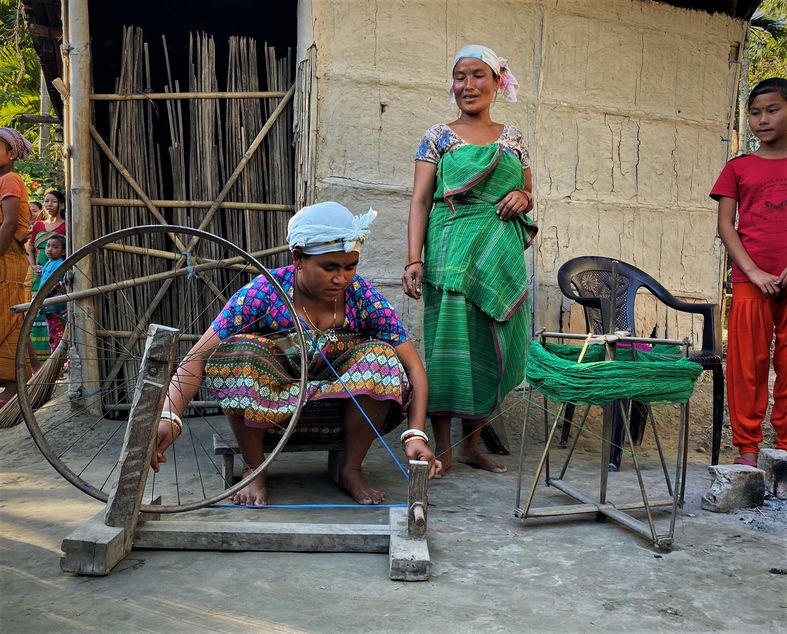
Livelihood in Bodo Villages
Bodoland is slowly revival from its extensive years of insurgency and brings out a ray of hope in terms of infrastructure, small scale industries and an opportunity to engage locals for employment. The agrarian livelihood is spread across multiple villages of four districts with villagers earning livelihood through farm products. With the initiatives by Bodoland Tourism, local guides are trained for various skills to provide an experiential rural experience to the tourists. Weaving, handloom and bamboo handicraft industry is progressively engaging a lot of villagers opening up income options. Across the periphery of the Manas National Park, the inhabitants of fringe villages are engaged in tourism industry and actively take part in resource and forest conservation.
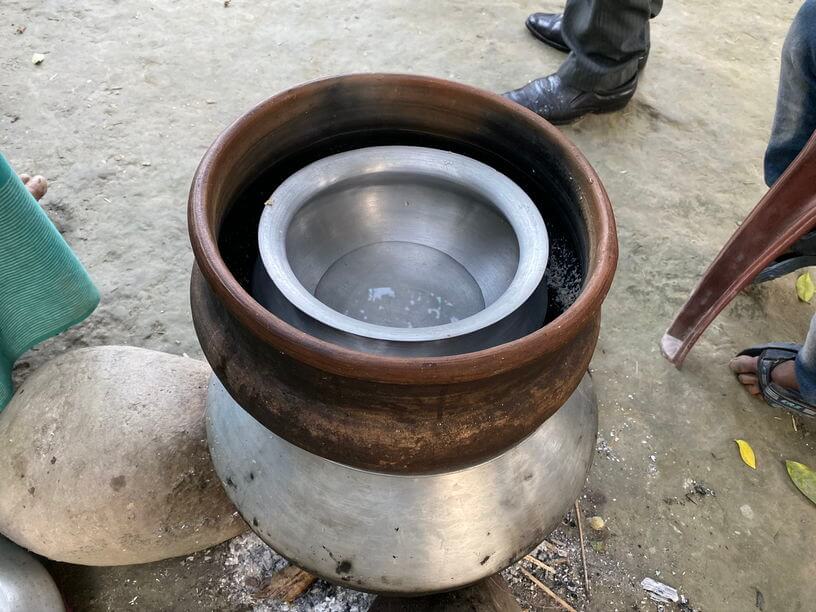
Making of Country Liquor through Rice fermentation
The process of wine and beer making in the Bodo village is quite an elaborate fermentation technique. Mostly, rice is used for making country liquor and its consumption is part of the culture. Rice beer and wine is an integral part of Bodo tradition. The rice is first boiled and mixed with a local yeast for fermentation. It is kept for three days and then boiled in a three tired vessel. The steam from the bottom vessel moves up, accumulates on the base of the top vessel and droplets drip down in middle. The accumulated liquid from the base of the first vessel is consumed as rice beer.
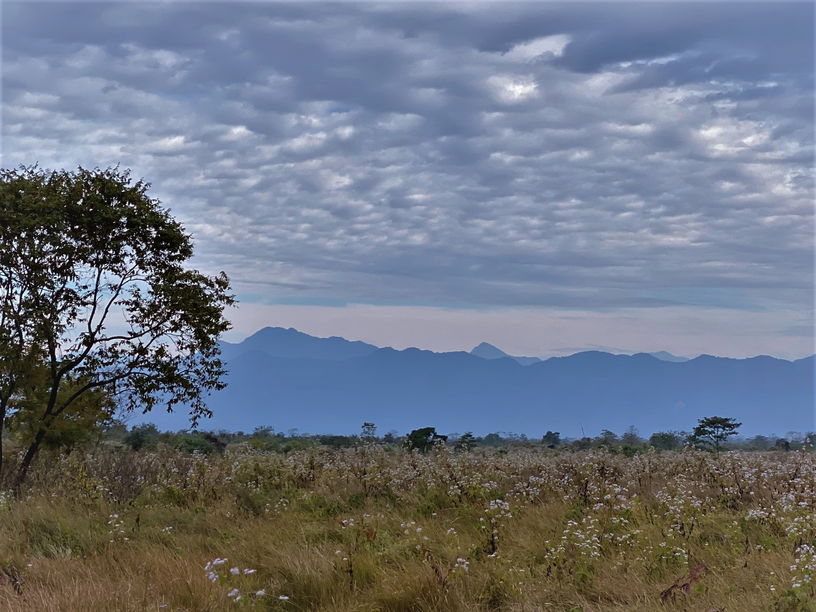
Experiences and Best Places to Visit Bodoland
Taste Rural Life in a Remote Bodo Village
The ethnic virtues and traditional practices can never be understood until a visit to a remote Bodo village. A trip to a Bodo Village of Nangdorbari gave a lot of knowledge about their religious belief, traditional attires, local cuisines and delicacies, community work, livelihood etc. The village not only gives better insight of rural life but brings cultural immersion breaking away all the ethnocentrism conceived faintly in mind. The hospitality by the Bodo People is a memory meant to be etched for a lifetime. Where the ephemeral pleasures of life ends for city grown-ups, their quest for livelihood and communal living starts.

Hand based rice pounding gear 
The art of making steamed rice cake
The main source of livelihood for Bodo people is agriculture followed by weaving and bamboo handicrafts. Every house in a Bodo village owns a loom where the women of the house weaves traditional attires (Dokhona) and Bodo scarfs. A lot of people are growing progressively through small scale business like selling handicrafts, local liquor, agrarian products, handloom work etc. Plan an Early Morning Trip to Kalamati
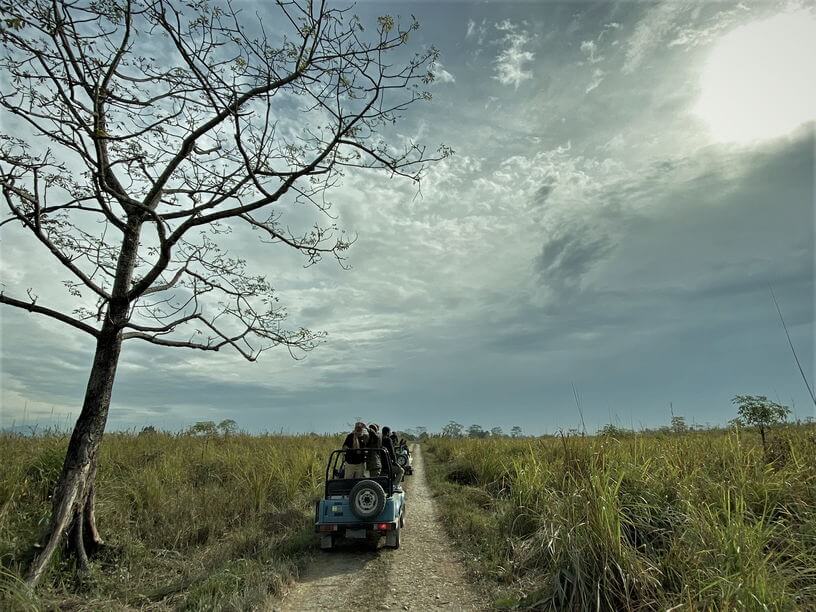
Soak into Wilderness of Manas National Park
Manas National Park is located in the foothills of Himalayas sandwiched between Assam and Bhutan. A part falls under Bhutan, named Royal Manas National Park. The national Park was given the UNESCO Heritage Site in the year 2003 and flaunts a mosaic of flora and fauna, with a winning biodiversity serving a utopian experience. The revival of Manas National Park and story of how it retained its UNESCO Heritage title is a story of indomitable efforts collectively taken by BTC, community of fringe villages, exhausting work by multiple NGOs and the government.
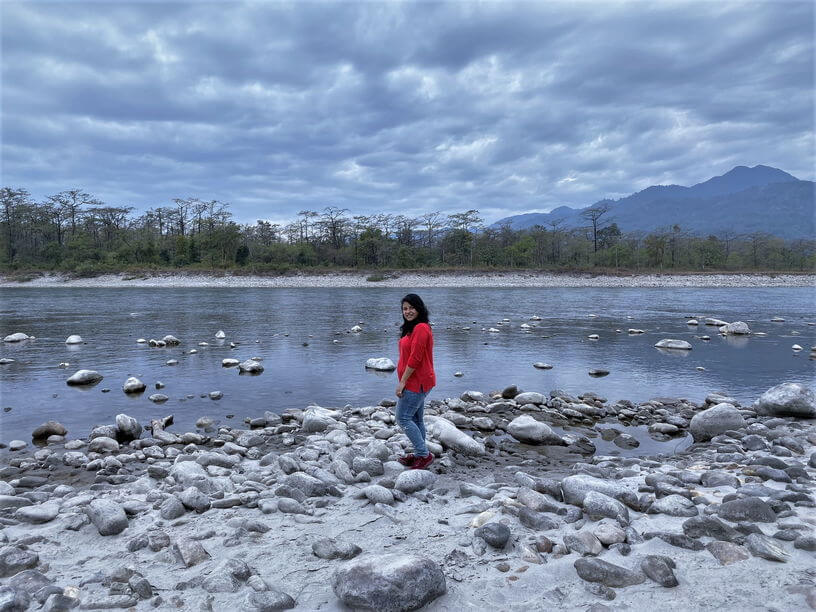
It is home to a number of endangered species and most popular for one-horned rhinos. The picturesque white sand banks of Manas River, magnificent wildlife, deep rooted indigenous culture of fringe villages and relentless community efforts glorifies its phenomenal sustenance. An early morning Jeep Safari through the national park to border of Bhutan is a perfect way to witness nuances of wilderness.
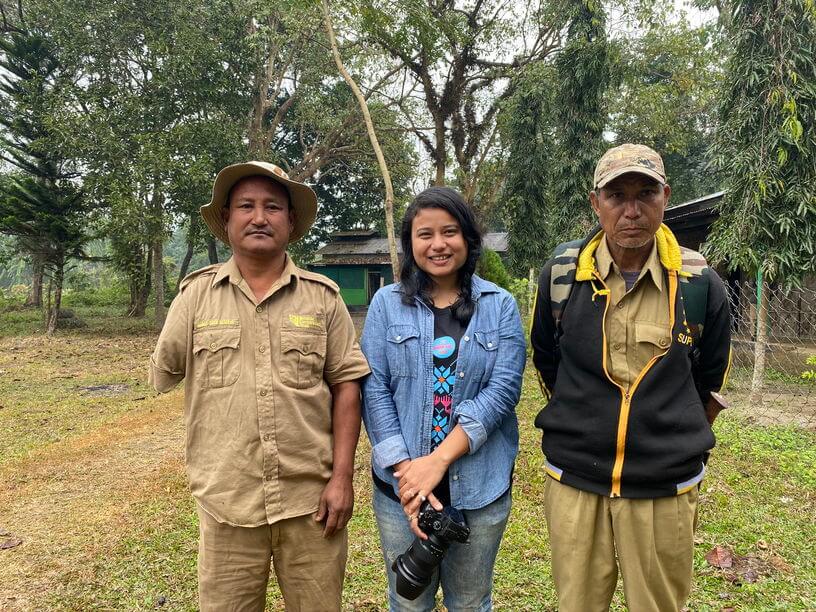
Visit an NGO and learn about Community Conservation Efforts
There are many NGO’s in Bodoland and mostly working around Manas National Park, aimed at conservation and protection of the forest resource. The community from the fringe villages actively participates in ensuring that poaching is completely stopped in order for the biodiversity and ecosystem of the forest to flourish. We had the chance to visit the Manas Maozigendri Ecotourism Society in Baksa and met some hardcore poachers turned conservationist safeguarding the forest. Apart from that, various NGO’s work for tiger, rhinoceros and elephant conservation and breeding.
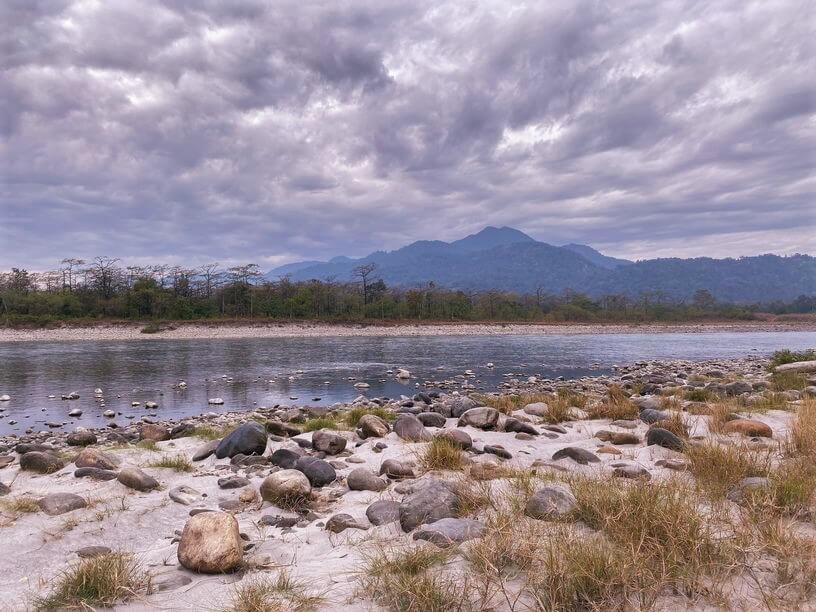
Go River Rafting in White waters of Bogamati
Although we did not have the chance to go for this thrilling adventure activity but Bogamati has gained massive tourist attraction over the past few years, with its white water rafting. It is a popular picnic spot as well and when you are around, you must not miss this exhilarating experience. The river flows through the Baksa district and is a great spot for adventure lovers. The panoramic view of the towering mountains and gorgeous vantage points doubles the surreal experience of river rafting in Bogamati.

Gorgeous Bhutanese Architecture 
The quaint restaurants of Gelephu
Trip to Gelephu crossing Indo-Bhutan Border
Gelephu is a small town located on Indo-Bhutan border located in the Sarphang Dzongkhang of Bhutan. It shares the border with India with Chirang District, Assam on its southern side. A journey through gorgeous landscapes, crystal clear river beds, bumpy roads and soothing breeze takes you from Bongaigaon to Bhutanese town of Gelephu. Indians can cross the border and travel till 5km radius within Gelephu without permit but need to submit passport or any other valid document for crossing. However, one needs to back to Indian side by 5pm. It is a great place to gorge some delicious Bhutanese food, relish the taste of fine Peach wine and explore the streets admiring Bhutanese architecture.

On the river Banks of Kalamati 
The black soil of Kalamati
Visit Kalamati for early morning sunrise
Kalamati translates to black soil, known for its unique landscape and soil containing high content of sulphur and other minerals. The bank of the river is interspersed with large stones and smaller rock pieces making it a wonderful picnic spot. The terrain overlooks the mountains in the backdrop with the sound of the gurgling river and hues from the sunlight. The elephants are known to be a regular visitor to the place as they lick the soil due to their high sulfur presence. The sunrise from the river bank as it peeps through the mountains is an enticing view.
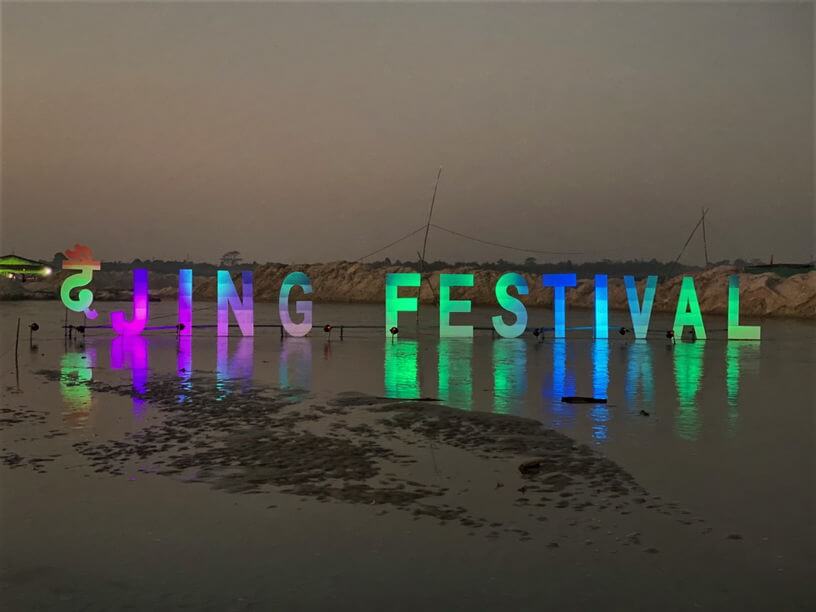
Attend Dwijing Festival on banks of Aie River
The best time to visit Bodoland is during the Dwijing Festival which is celebrated for 12 days on banks of Aie River. It is an annual river festival and 2019 -2020 celebrated its 4th edition from 27th Dec to 7th Jan. The festival is an initiative by Bodoland Tourism and Assam Tourism to bring Bodoland on national map as upcoming tourist destination in Assam. The 12 days festival showcases culture, traditions, folk dances, ethnic cuisines and an insight into life of people of Bodoland. There are many adventure activities, boat riding, hot air balloon ride, fair for children, handloom & handicraft stalls etc. and aims at economic development of the region by giving opportunity to local people to bring forward their business. The stage is lit with entertaining performance by some of the notable Bollywood and local artists.
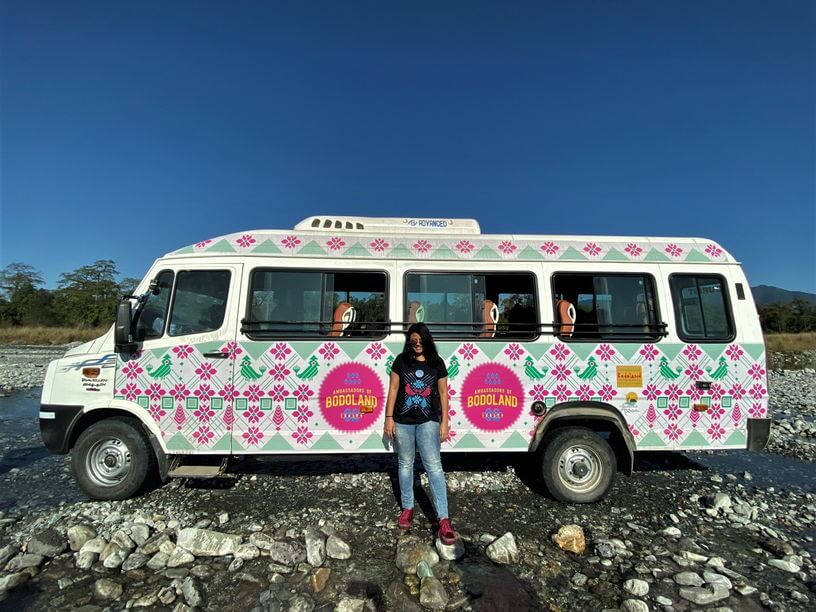
How to travel to Bodoland and experience Dwijing Festival?
The most accessible and easily reachable place for Dwijing Festival and for exploring Bodoland is to reach Bongaigaon. Keeping the base as Bongaigaon, all the places along with Dwijing Festival can be easily attended. There are regular train and bus services from Guwahati to Bongaigaon. However, public transport is not a very convenient way to travel across Bodoland. It is highly recommended to use your own vehicle. I was invited along with 11 other travel content creators from across India to attend Dwijing Festival and explore Bodoland. We had our own customized vehicle during the 10 day road trip across these places which made the journey pretty convenient.
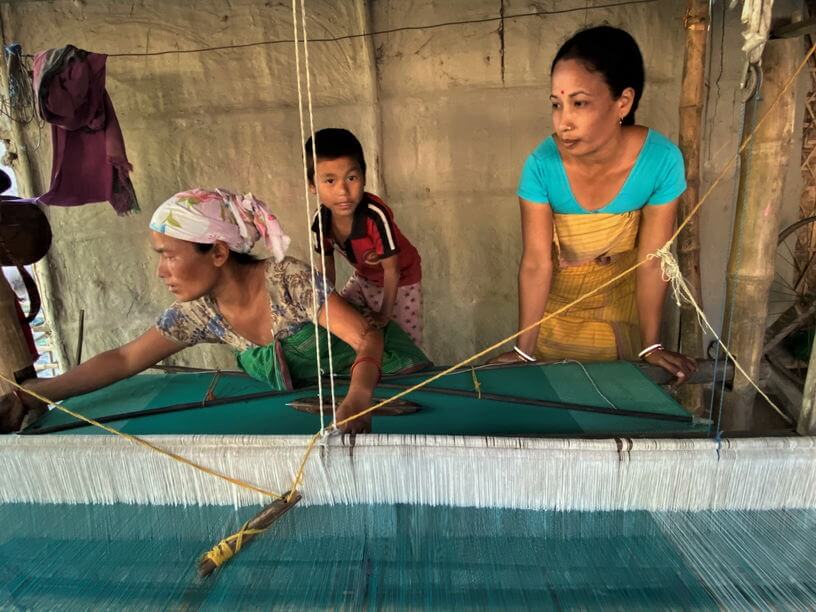
The accommodation option in Bongaigaon ranges from guest houses to 3-star hotel properties. As “Ambassadors of Bodoland” – brainchild program of Root Bridge Foundation, we stayed at Cygnett Park in Bongaigaon which is a 3-three hotel and the best one in the area.
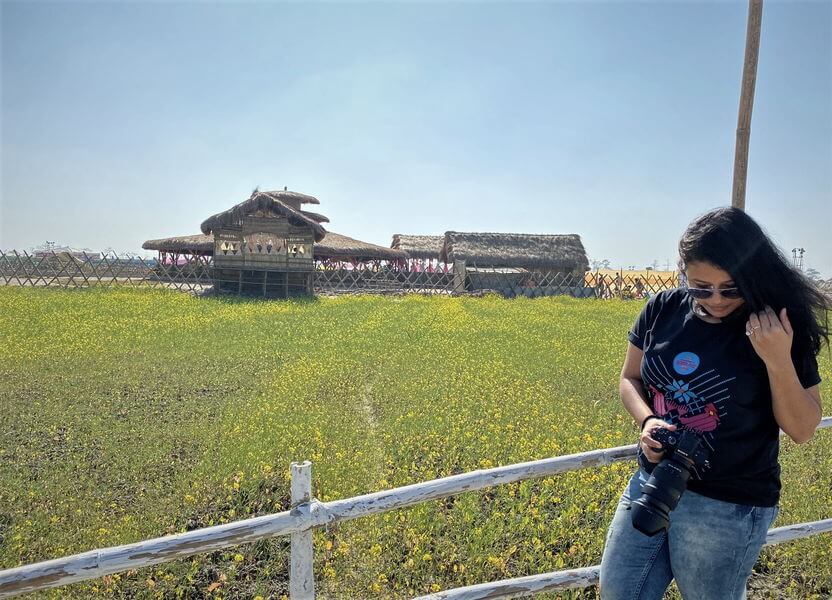
Final Words
Bodoland is an enchanting piece of land that will unfold deep layers of cultural immersion and experiences through its ethnic nuances. The profound and deep rooted embracement of their tribal identity and eccentric traditions are perfect amalgamation for someone interested in culture, heritage and folklore. The road trip through the remote villages of Bodoland, scenic routes strewn with mustard plantation, unheard folklores, diverse cultural per se and relentless hospitality will proliferate the experience into some of the best memories ever lived.
PIN THE POST FOR LATER
Disclaimer : I was invited as Ambassadors of Bodoland, an initiative by Root Bridge Foundation. The trip was an collaboration with Bodoland Tourism and Assam Tourism. All the views are mine whatsoever.
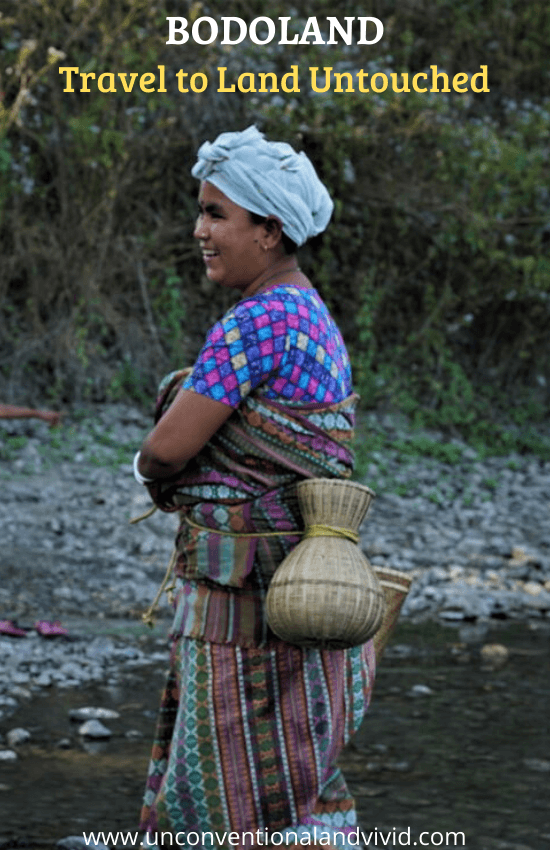
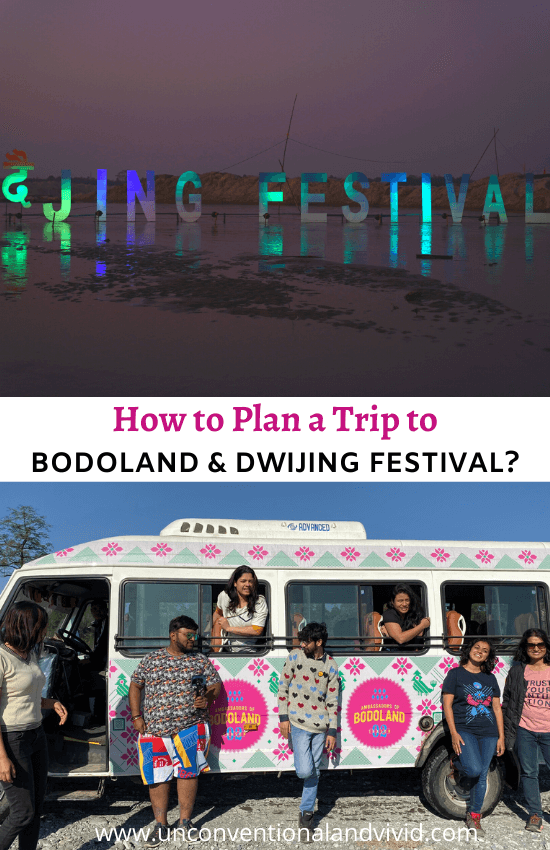
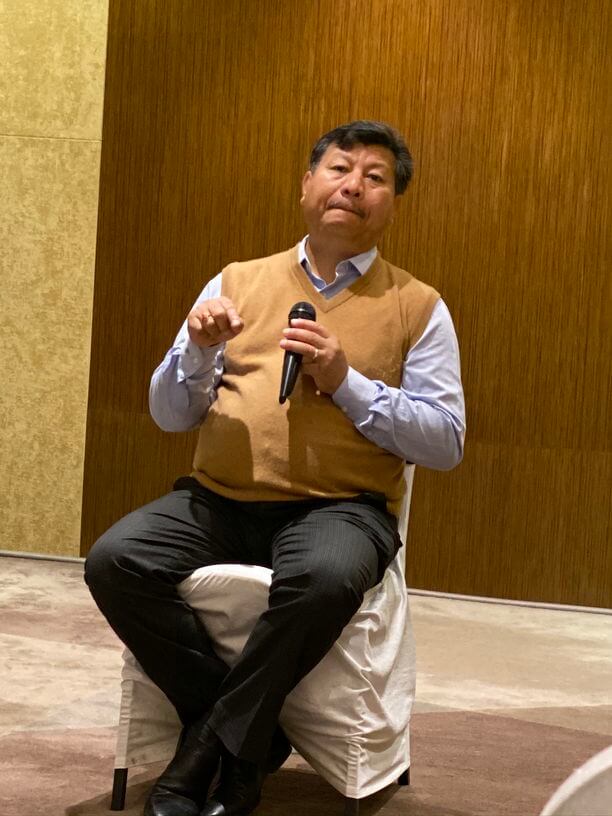
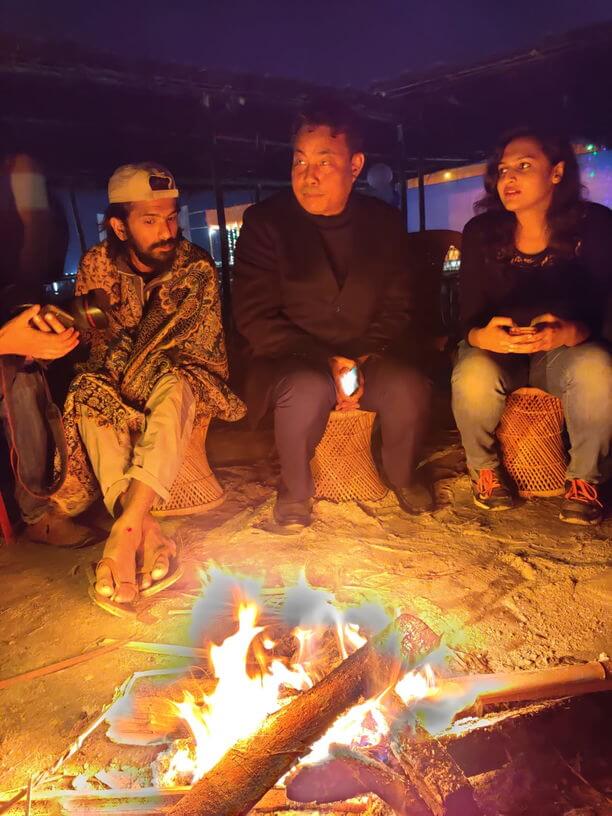

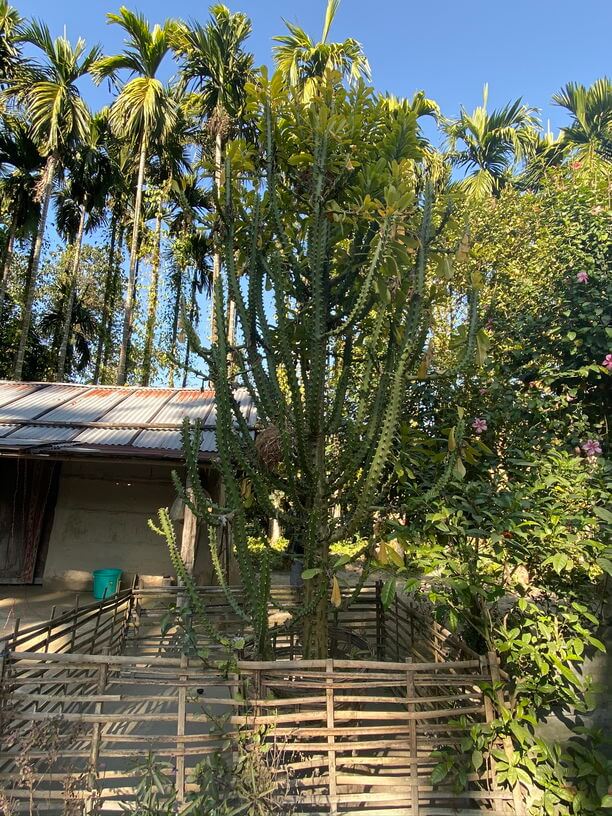
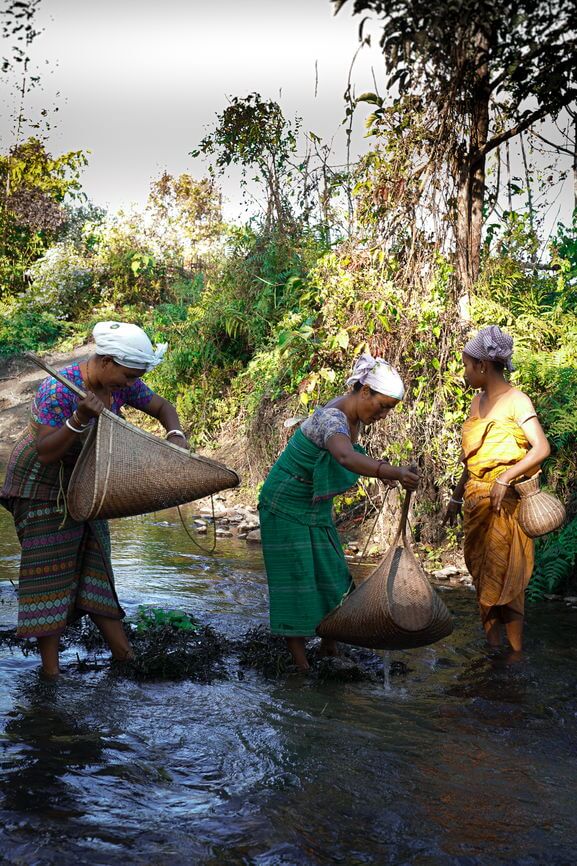
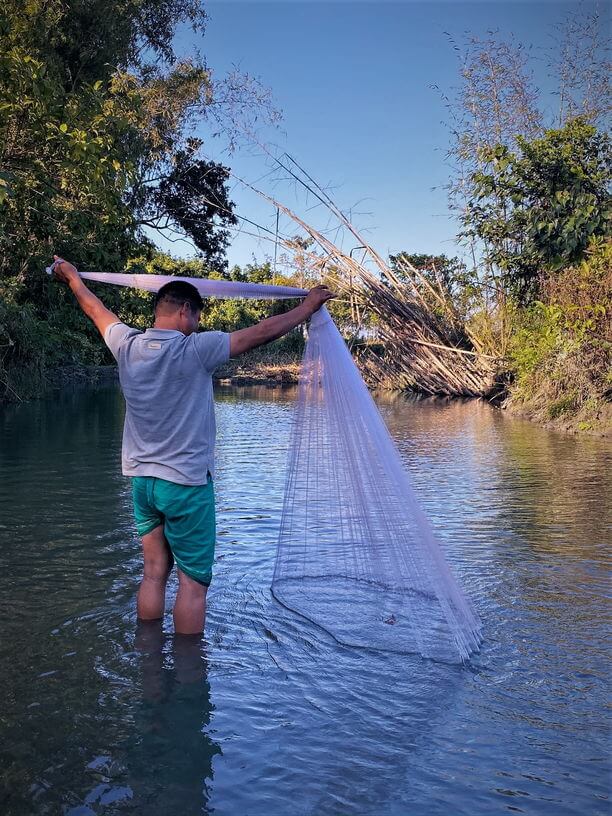
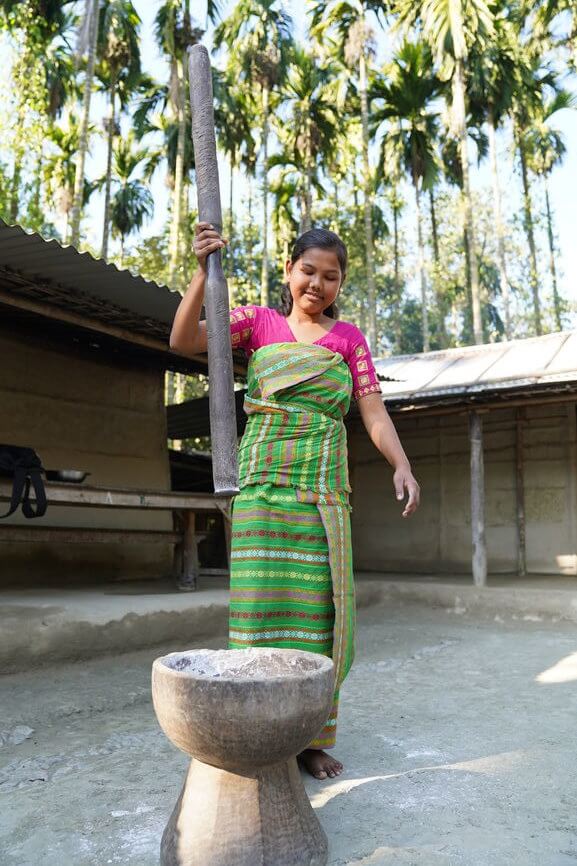
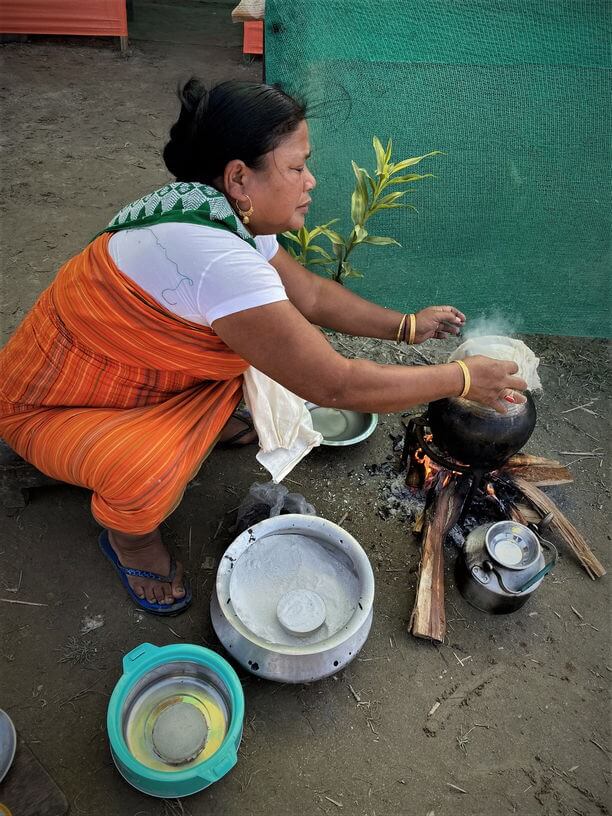
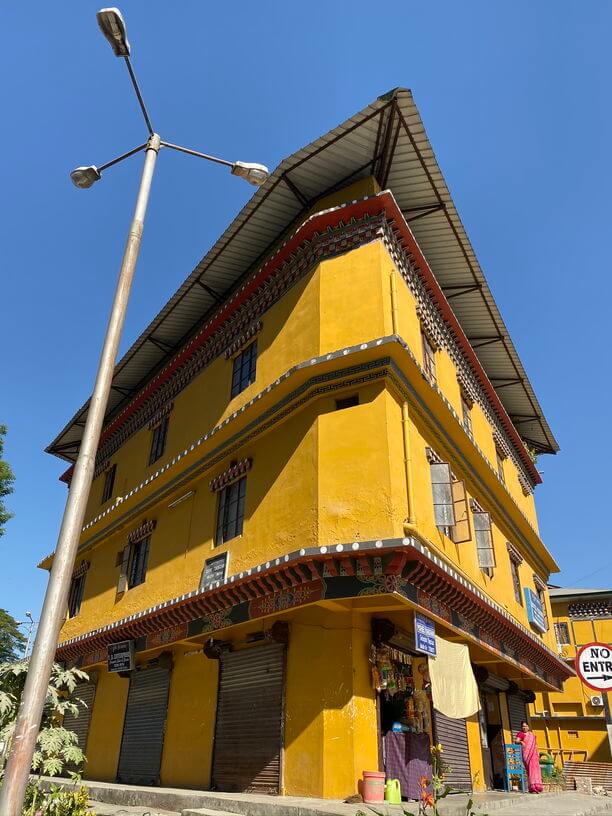
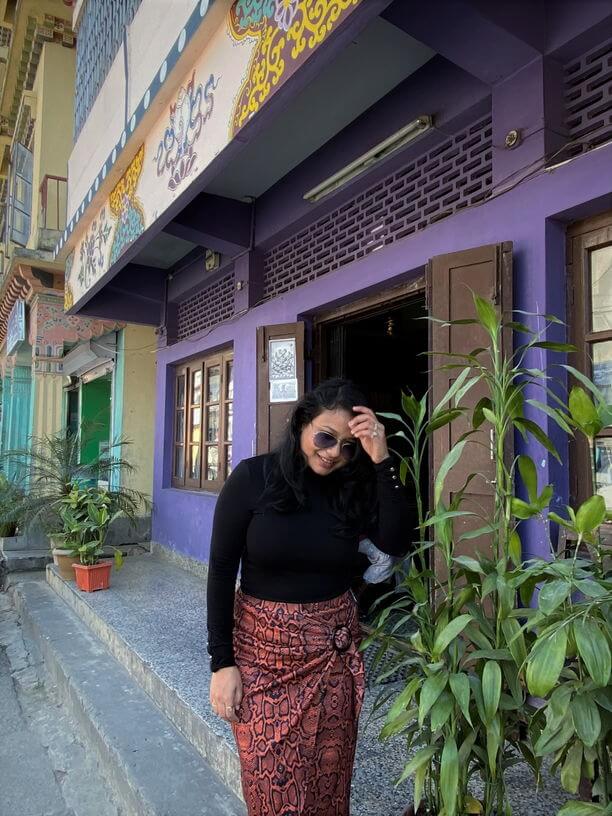



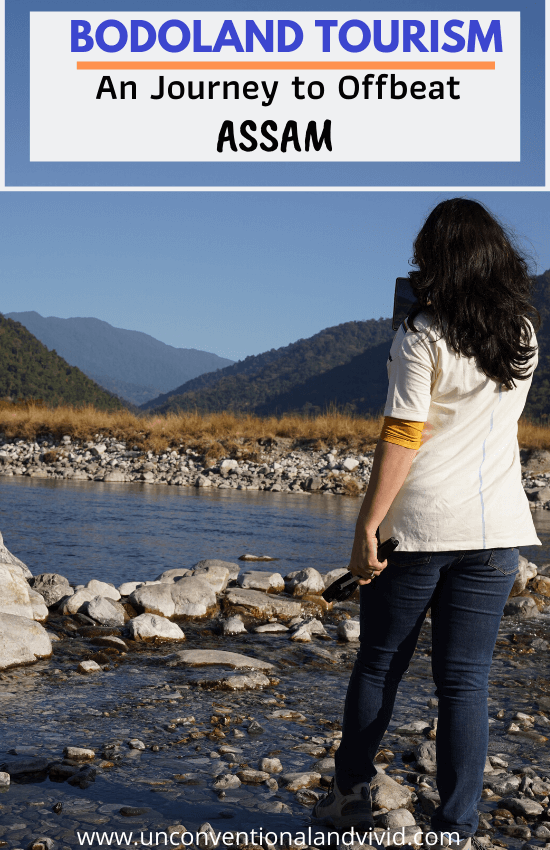

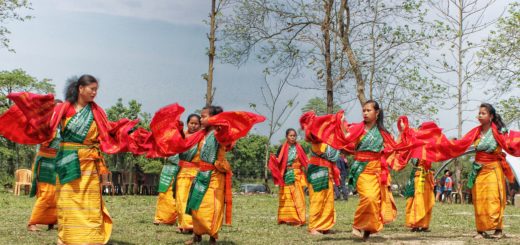
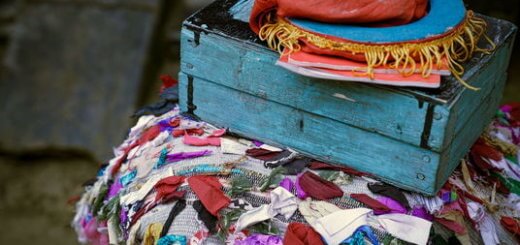
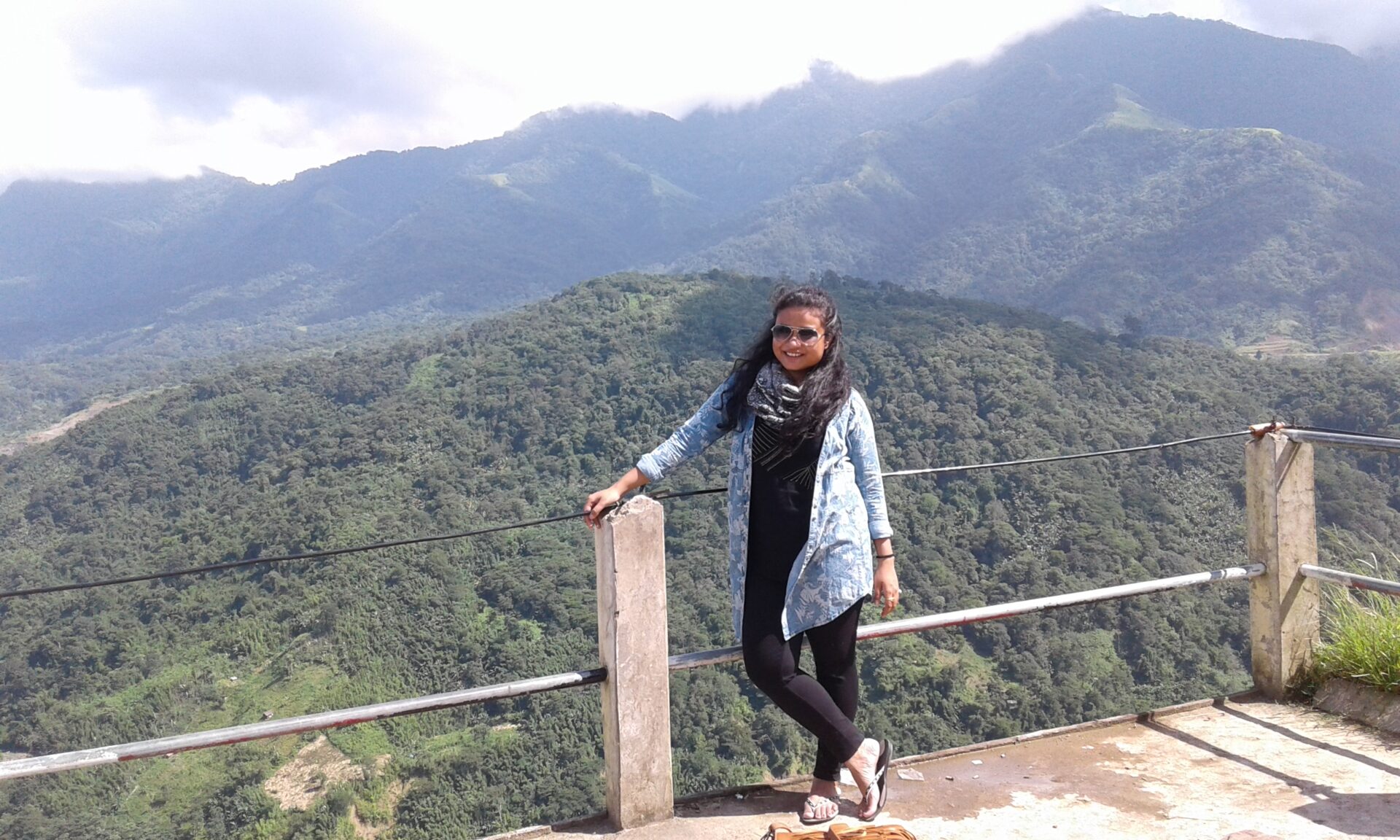

Amazing post. Such a depth knowleged. Thank you for sharing.
Thanks Nitin! I am glad you liked it. Cheers 🙂
Hullo Upasana, I heard you on the Musafir Podcast and then looked up your website / blog. Very well written blogs and fabulous pictures ! Kudos. Intrigued by your Manas Trip as I was planning a trip to Assam myself and trying to zero down onto a National Park to visit in Assam. So if I had the time to just one would you say Manas is better than Kaziranga which I presume is more touristy. Please share your opinion, thanks & best wishes for your travels ahead !!
Hey Raghuraj!
Thank you so much. It means a lot. Anytime, any day I would recommend Manas National Park over Kaziranga, as it is more scenic and a little offbeat. However, if you want to spot Rhinos, Pobitora Wildlife Sanctuary is a great option. Have a good trip